Moon Birth and Methane Weather: Cassini's 7 Oddest Saturn Finds
Saucy Saturn
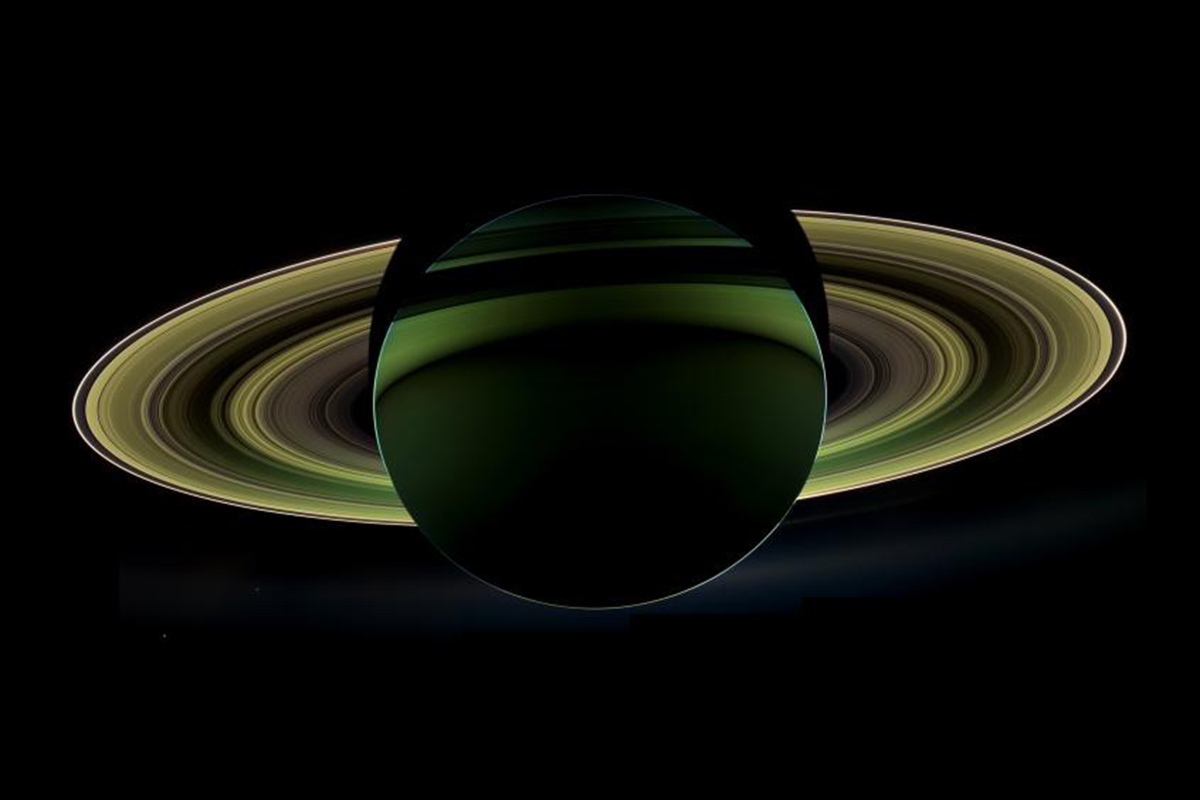
The first Saturn-dedicated spacecraft, Cassini, orbited the planet for about 13 years. The craft's fiery (and lethal) plunge through the planet's atmosphere on Friday, Sept. 15, 2017, may be the end for the mighty spacecraft. But its discoveries about the ringed planet will live on, at least here on Earth.
Some of those findings were more than enlightening — they were downright odd. Here's a look at the weirder side of the Cassini mission.
Hyperion is static
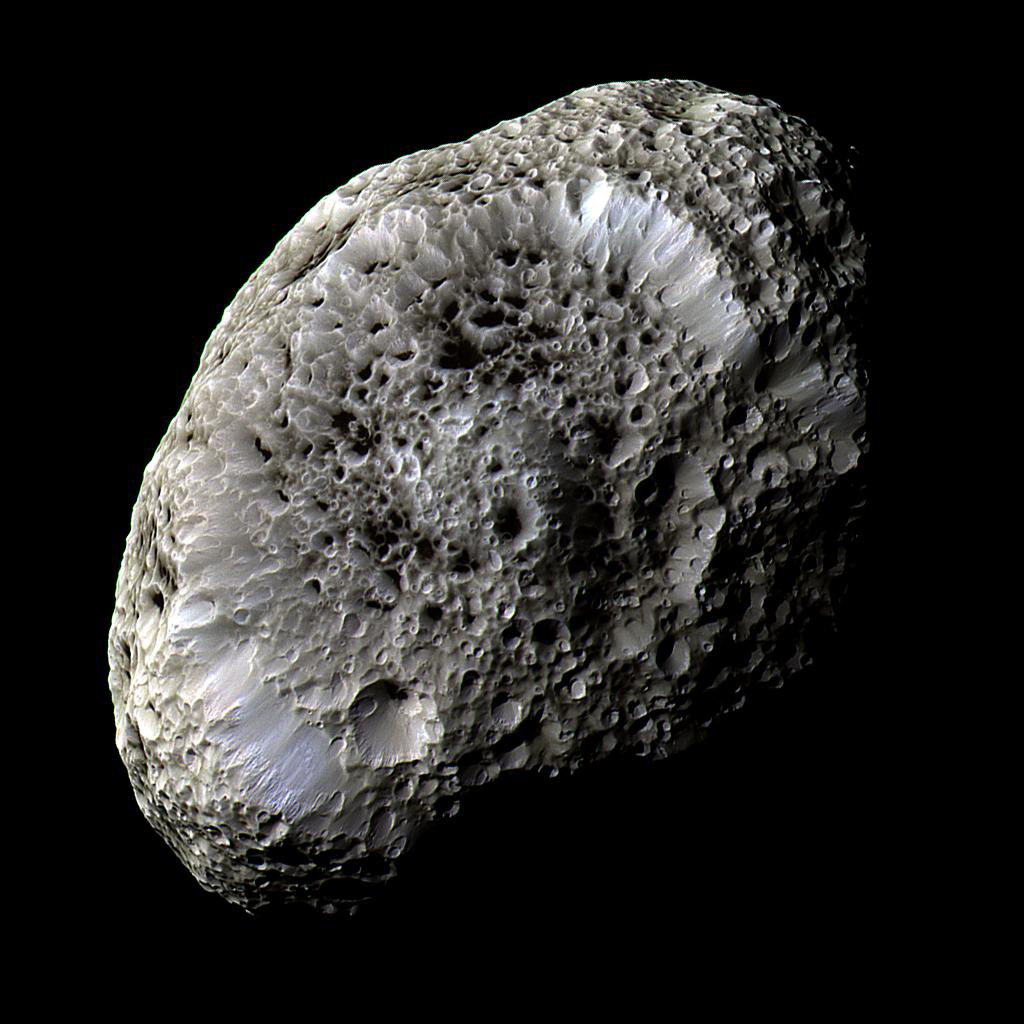
Saturn's moon Hyperion is an irregularly shaped rock that orbits Saturn some 920,300 miles (1.48 million km) above the planet's cloud tops. In one of Cassini's flybys in 2005, the probe found itself in a beam of charged particles emanating from that moon. It turned out that Hyperion was charged with static electricity, so much so that Cassini could detect the charge, according to NASA.
Static electricity is an important phenomenon on Earth's moon, due to the combination of dryness (there's no water) and exposure to charged particles from the sun. Cassini's detection of Hyperion's "particle beam" was the first time the phenomenon had been seen on a moon of another planet in our solar system. And it offered insights into how scientists could design spacecraft to survive in harsh, electrically charged, environments in the future, researchers said.
Birth of a moon
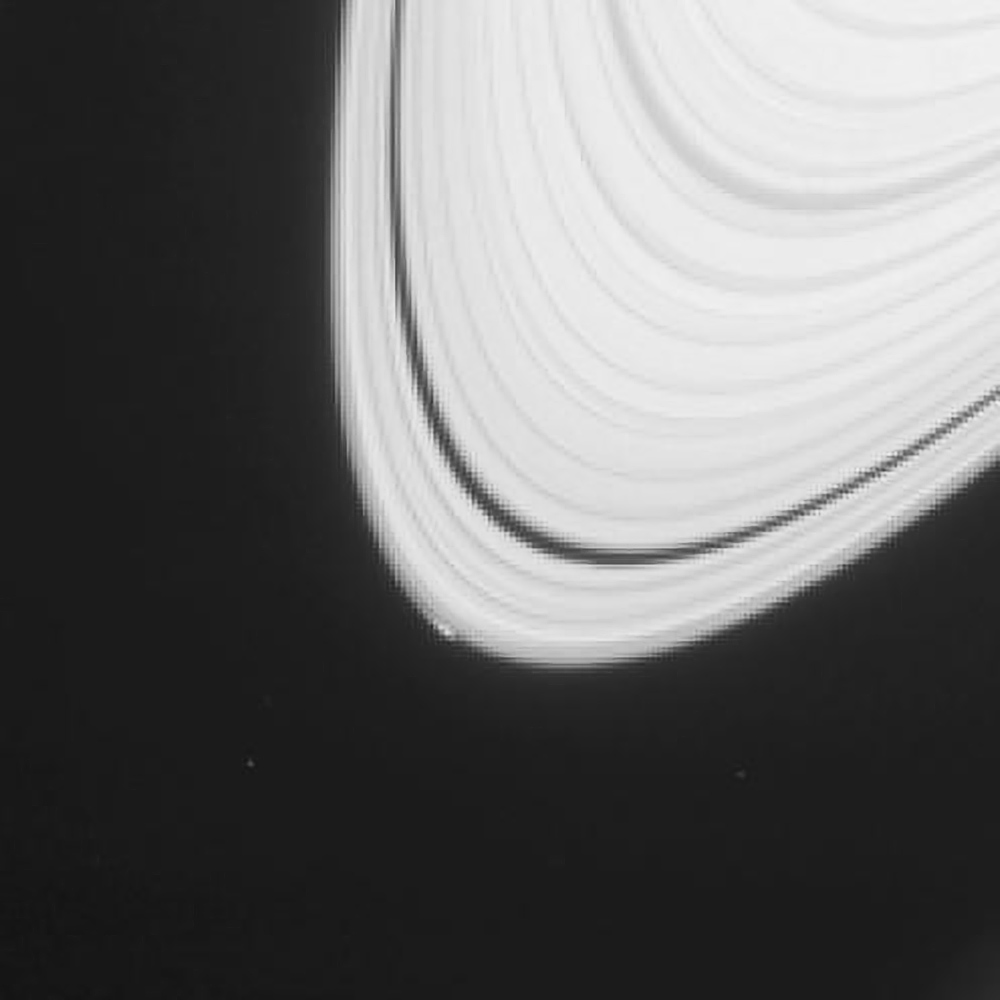
Saturn has 62 moons, from giants like Titan, which is larger than the planet Mercury, to 1,300-foot-wide (400 meters) moonlets. But how often do you see a moon being born? Cassini might have caught such an event in 2014. NASA released images of the edge of Saturn's A ring, one of the bright and wide outer regions. Cassini got pictures of an arc that was 20 percent brighter than its surroundings, 750 miles (about 1,200 kilometers) long and 6 miles (10 km) wide.
The mission scientists also saw what looked like unusual irregularities on the edge of the ring: small bulges caused by the gravitational pull of something nearby. The arc and protuberances on the ring could have been a small moon accreting from bits of icy material, a replay of the birth process of Saturn's larger moons, researchers said. NASA said there was no expectation that the object, which they named Peggy, would get bigger — it's less than a mile across — and it may even fall apart. But seeing it illuminates much of the process of moon-building, scientists said. The study describing the discovery was published in the April 14, 2014, issue of the journal Icarus.
Mimas has football-shaped core
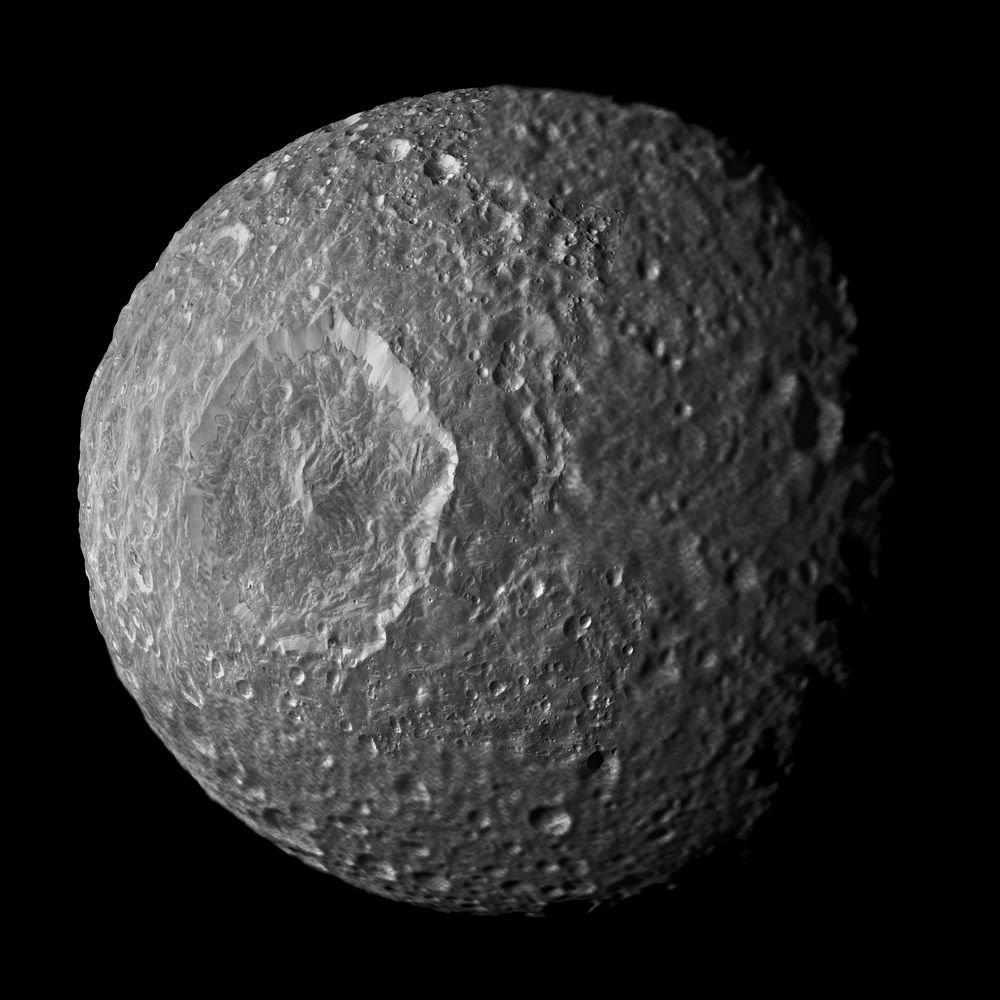
Saturn's moon Mimas — sometimes called the "Death Star" for its resemblance to the iconic "Star Wars" weapon — might have a core that's oblong like a football.
As Cassini flew by Mimas, the probe took pictures, and those photos enable scientists back on Earth to see how the moon spins on its axis — how it wobbles a bit. The researchers found something odd: a solid core, which Mimas was assumed to have, didn't fit the data they were getting. Two hypotheses fit: an ocean-like core of liquid, probably water, or one that was not really spherical.
As it happens, a number of moons in the solar system look like they have global oceans — Enceladus and Ganymede are two — so Mimas having one wasn't such a wild idea. Any ocean would have to be 15 to 20 miles (24 to 31 km) below the surface of the 246-mile-across (396 km) moon, since the only heat source is the kneading of Mimas by tidal forces from Saturn, said Radwan Tajeddine, a Cassini research associate at Cornell University, and lead author on the paper, in a NASA press release.
Later research published in the Journal of Geophysical Research in February 2017 seemed to show that the oblong core, rather than a hidden ocean, was the most likely explanation for the data they were seeing. But that raised another question: How do you make a planetary core nonspherical? If Mimas formed in Saturn's rings and was originally small enough to be an irregular shape, it might have accreted more matter later, leaving a "fossil" core that remained in its original shape even after it accumulated enough matter that the outer layers relaxed into a sphere around it, according to the study led by Alyssa Rhoden at Arizona State University.
Titan has water, too – it's just really salty
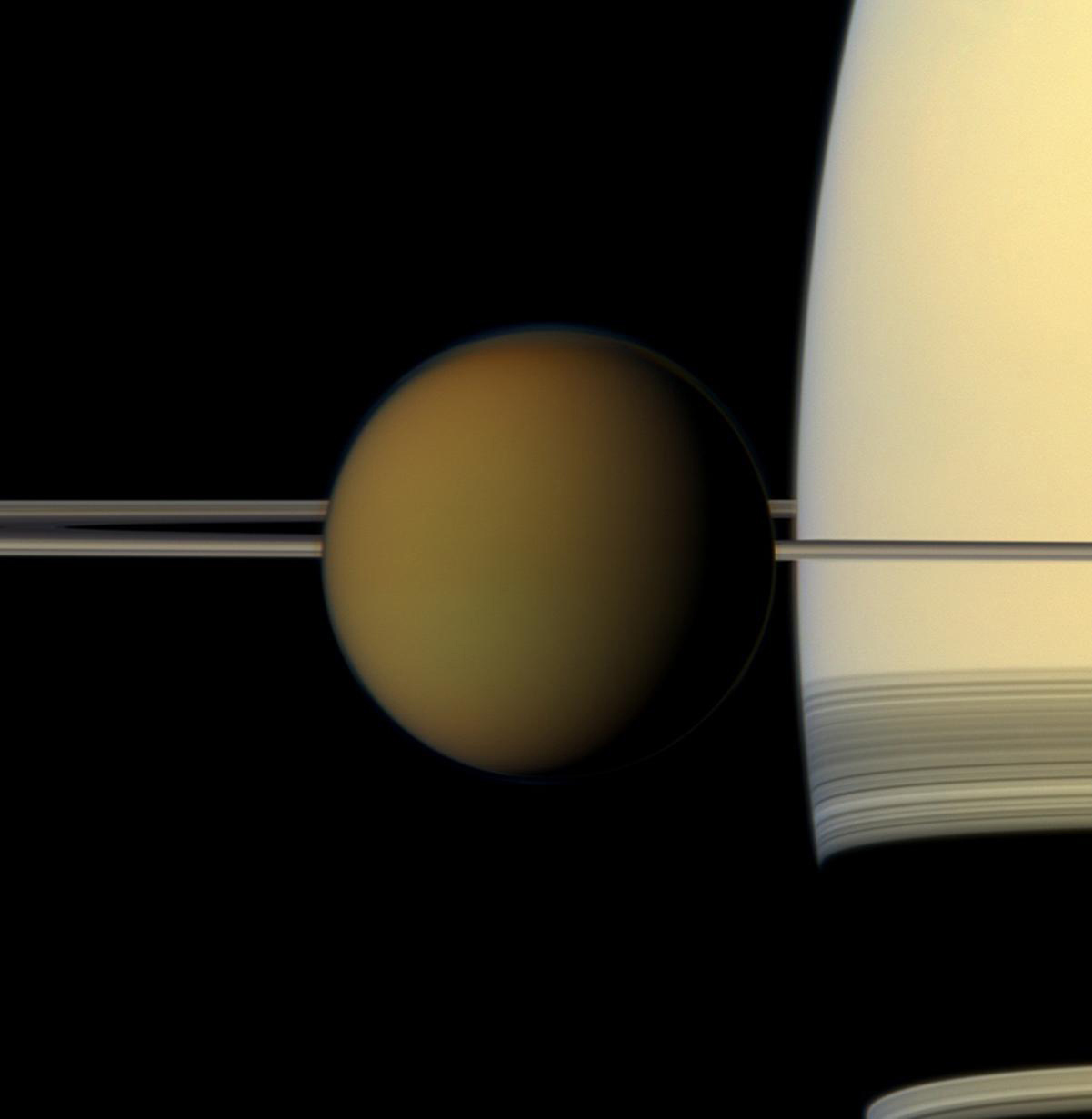
Titan gets a lot of press for its methane lakes and hydrocarbon snow. But it's also an ocean world of sorts: Cassini data showed that Titan has a very salty subsurface ocean filled with water not unlike that in the Dead Sea on Earth. The discovery also showed that on Titan, where water ice acts like rock (the icy crust is slowly freezing as the planet loses its internal heat), the methane that outgases into its atmosphere is not getting recycled in a frigid version of plate tectonics.
Hexagonal jet stream
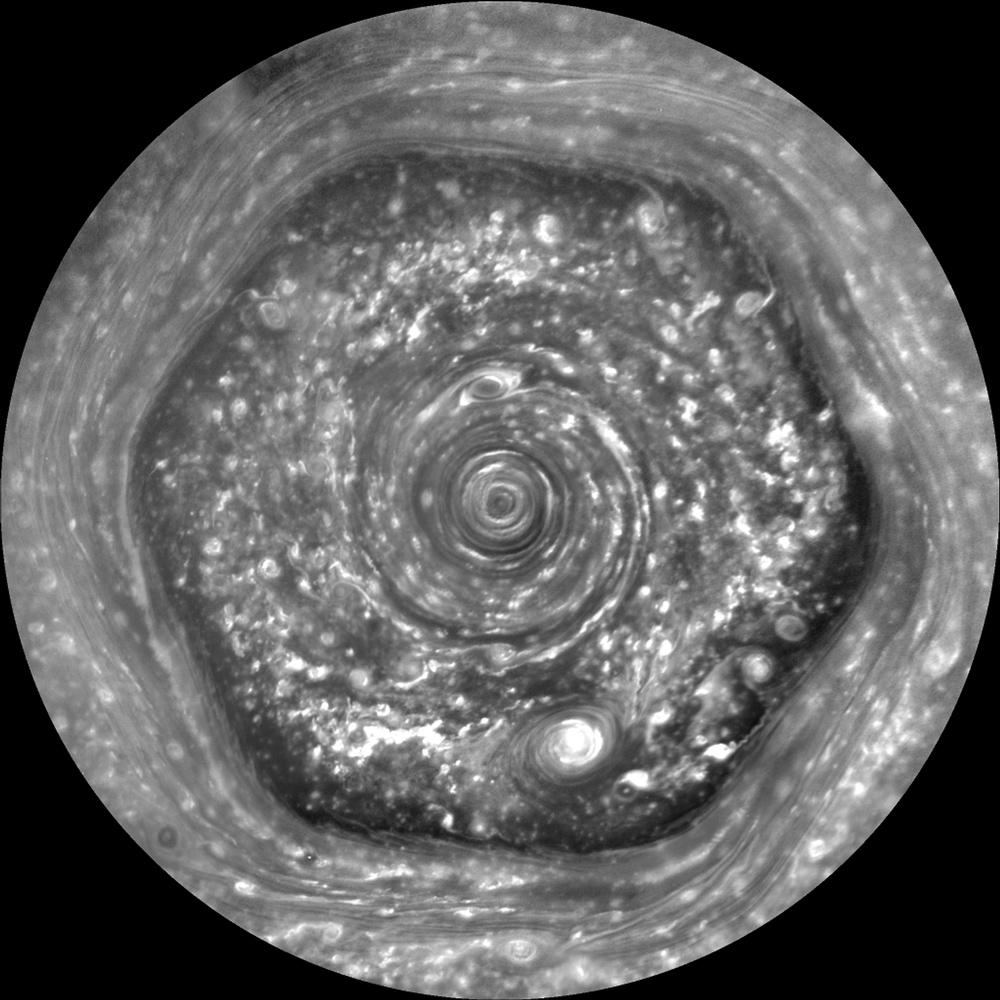
Perhaps one of the weirdest things about Saturn is the planet's hexagon. It looks almost artificial — a set of jet streams around Saturn's north pole that takes on the shape of a hexagon and is unlike anything on Earth.
The hexagon is about 20,000 miles (32,000 km) wide and reaches some 60 miles (almost 100 km) into the planet's atmosphere; planetary scientists have tried various models to explain how one might get such a neat geometric shape.
There are several proposed explanations for the hexagon. In 2015, Raúl Morales-Juberías at the New Mexico Institute of Mining and Technology led a team that ran computer simulations of Saturn's atmosphere. The researchers found that a jet stream moving around Saturn's pole at more than 200 mph (320 km/h) will eventually meander into a hexagonal shape, suggesting such a jet stream is the culprit.
Lightning on another planet
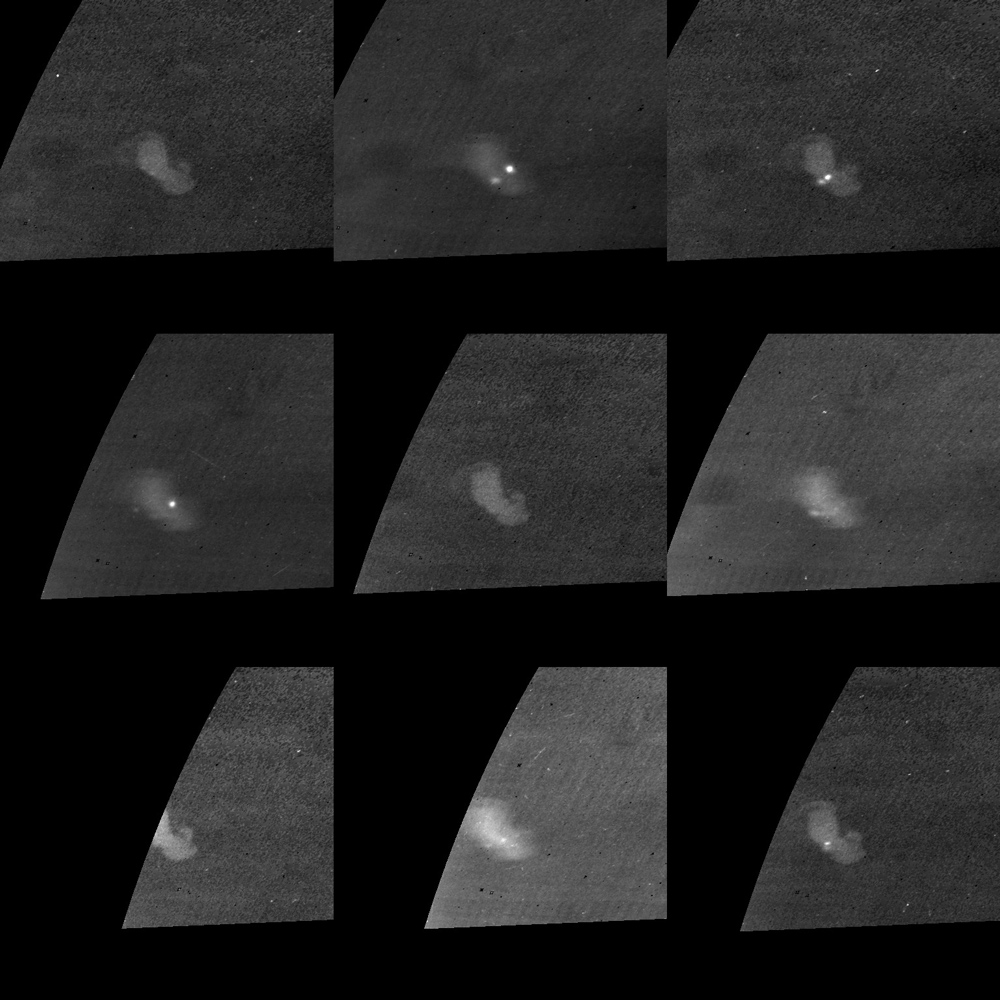
On Aug. 17, 2009, Cassini made the first movie of lightning on Saturn. This was the first time the phenomenon had ever been captured in video on another planet. In a statement from the Jet Propulsion Laboratory, Andrew Ingersoll, a Cassini imaging science subsystem team member at the California Institute of Technology, noted in a press release that the storms that make the lightning are at least as powerful on Saturn as they are on Earth, though they happen less often on the ringed planet.
Unlike Earthly thunderstorms, though, Saturnian lightning storms can last months rather than hours, Ingersoll said. The initial images of lightning were taken at night, but two years later, Cassini caught images of lightning on Saturn's dayside.
Titan's weird weather
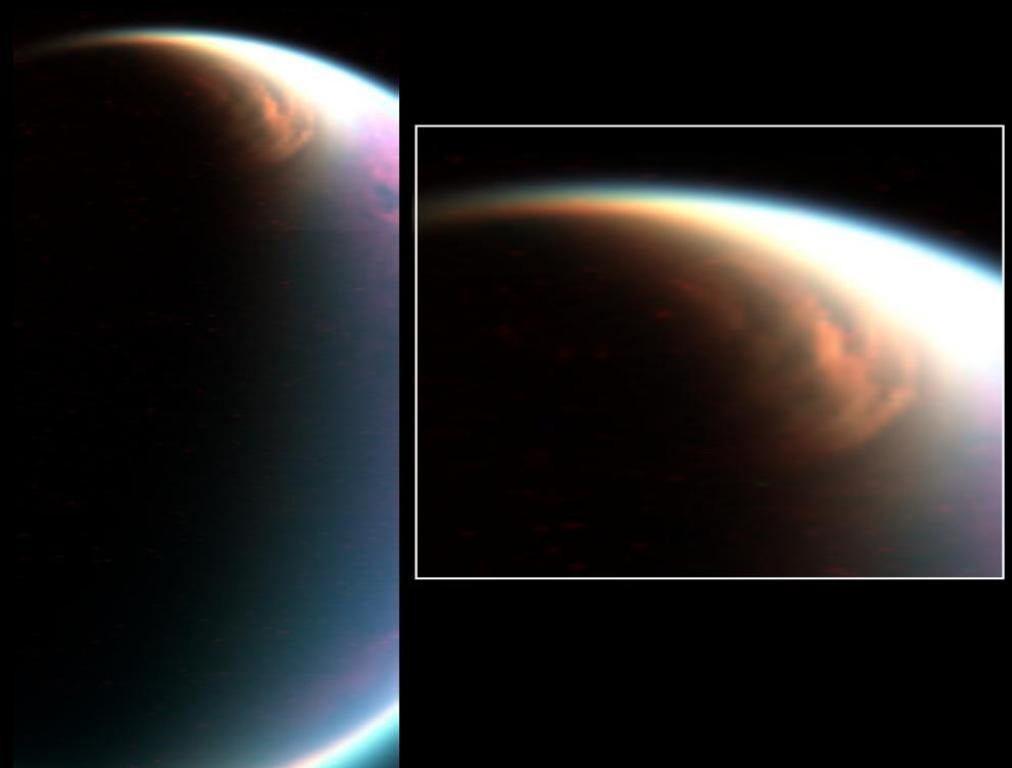
In the early days of Cassini's mission, in 2006, the Huygens probe aboard the Cassini craft found evidence of methane drizzles on Titan. At the time, little was known about Titan's surface; we knew from Voyager data only that the atmosphere was about 1.5 times the pressure of Earth's and was made largely of nitrogen with a small amount of methane and hydrogen.
Cassini gave us the first direct look at the methane lakes at the moon's poles. Huygens beamed back a picture of the weather at the surface and found that the weather forecast on Titan was pretty straightforward: a 100-percent chance of methane drizzles every day and temperatures of about minus 300 degrees Fahrenheit (minus 184 degrees Celsius).
Sign up for the Live Science daily newsletter now
Get the world’s most fascinating discoveries delivered straight to your inbox.











